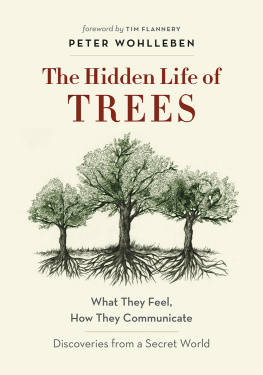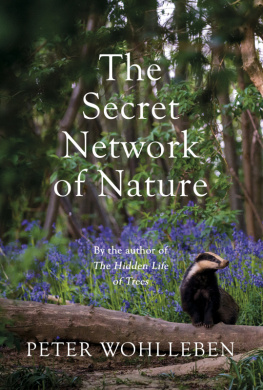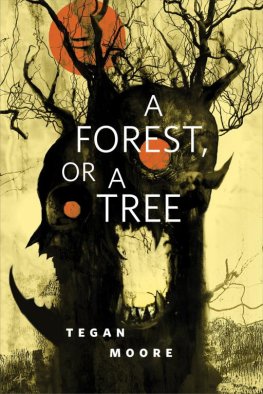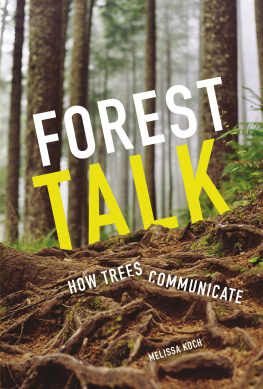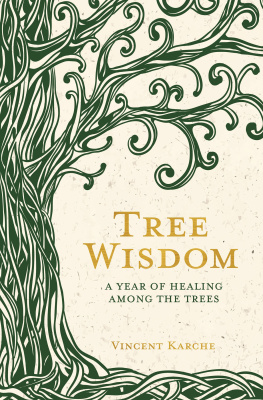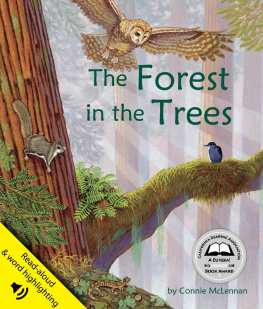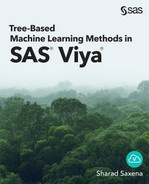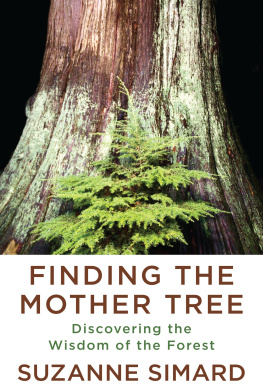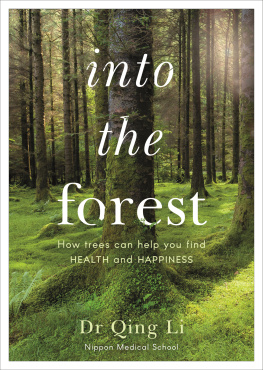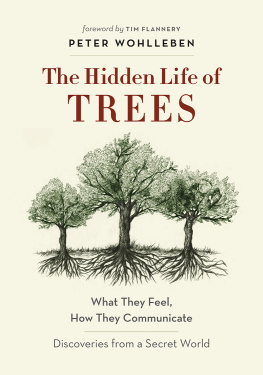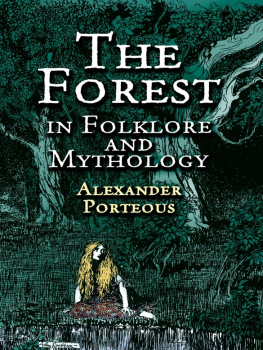foreword by TIM FLANNERY
PETER WOHLLEBEN
TRANSLATION BY JANE BILLINGHURST
THE HIDDEN LIFE OF
TREES
What They Feel,
How They Communicate
Discoveries from a Secret World
FOREWORD
WE READ IN fairy tales of trees with human faces, trees that can talk, and sometimes walk. This enchanted forest is the kind of place, I feel sure, that Peter Wohlleben inhabits. His deep understanding of the lives of trees, reached through decades of careful observation and study, reveals a world so astonishing that if you read his book, I believe that forests will become magical places for you, too.
One reason that many of us fail to understand trees is that they live on a different time scale than us. One of the oldest trees on Earth, a spruce in Sweden, is more than 9,500 years old. Thats 115 times longer than the average human lifetime. Creatures with such a luxury of time on their hands can afford to take things at a leisurely pace. The electrical impulses that pass through the roots of trees, for example, move at the slow rate of one third of an inch per second. But why, you might ask, do trees pass electrical impulses through their tissues at all?
The answer is that trees need to communicate, and electrical impulses are just one of their many means of communication. Trees also use the senses of smell and taste for communication. If a giraffe starts eating an African acacia, the tree releases a chemical into the air that signals that a threat is at hand. As the chemical drifts through the air and reaches other trees, they smell it and are warned of the danger. Even before the giraffe reaches them, they begin producing toxic chemicals. Insect pests are dealt with slightly differently. The saliva of leaf-eating insects can be tasted by the leaf being eaten. In response, the tree sends out a chemical signal that attracts predators that feed on that particular leaf-eating insect. Life in the slow lane is clearly not always dull.
But the most astonishing thing about trees is how social they are. The trees in a forest care for each other, sometimes even going so far as to nourish the stump of a felled tree for centuries after it was cut down by feeding it sugars and other nutrients, and so keeping it alive. Only some stumps are thus nourished. Perhaps they are the parents of the trees that make up the forest of today. A trees most important means of staying connected to other trees is a wood wide web of soil fungi that connects vegetation in an intimate network that allows the sharing of an enormous amount of information and goods. Scientific research aimed at understanding the astonishing abilities of this partnership between fungi and plant has only just begun.
The reason trees share food and communicate is that they need each other. It takes a forest to create a microclimate suitable for tree growth and sustenance. So its not surprising that isolated trees have far shorter lives than those living connected together in forests. Perhaps the saddest plants of all are those we have enslaved in our agricultural systems. They seem to have lost the ability to communicate, and, as Wohlleben says, are thus rendered deaf and dumb. Perhaps farmers can learn from the forests and breed a little more wildness back into their grain and potatoes, he advocates, so that theyll be more talkative in the future.
Opening this book, you are about to enter a wonderland. Enjoy it.
TIM FLANNERY
INTRODUCTION TO
THE ENGLISH EDITION
WHEN I WROTE this book, I wanted to describe my experiences in the forest I manage in the Eifel mountains in Germany and record what the trees had taught me. As soon as the German edition of the book was published, it was clear that the story I had to tell struck a chord with many, many people. My message, though grounded in a forest I interact with almost every day, is a message that applies to forests and woodlands around the world.
I am most familiar with the struggles and strategies of beeches and oaks, and with the contrast between deciduous forests that plan their own futures and coniferous forests planted for commercial gain. However, the struggles and strategies in forests left to their own devices, and the tension created when forests are planted instead of evolving at their own pace, are issues that resonate far beyond my experiences in Hmmel.
I encourage you to look around where you live. What dramas are being played out in wooded areas you can explore? How are commerce and survival balanced in the forests and woodlands you know? This book is a lens to help you take a closer look at what you might have taken for granted. Slow down, breathe deep, and look around. What can you hear? What do you see? How do you feel?
My story also explains why forests matter on a global scale. Trees are important, but when trees unite to create a fully functioning forest, you really can say that the whole is greater than its parts. Your trees may not function exactly as my trees do, and your forest might look a little different, but the underlying narrative is the same: forests matter at a more fundamental level than most of us realize.
Before you plunge into this book to find out what I have discovered just by stepping outside my back door, I want to tell you a story about Yellowstone National Park in the United States to show just how vital undisturbed forests and woodlands are to the future of our planet and how our appreciation for trees affects the way we interact with the world around us.
It all starts with the wolves. Wolves disappeared from Yellowstone, the worlds first national park, in the 1920s. When they left, the entire ecosystem changed. Elk herds in the park increased their numbers and began to make quite a meal of the aspens, willows, and cottonwoods that lined the streams. Vegetation declined and animals that depended on the trees left. The wolves were absent for seventy years. When they returned, the elks languorous browsing days were over. As the wolf packs kept the herds on the move, browsing diminished, and the trees sprang back. The roots of cottonwoods and willows once again stabilized stream banks and slowed the flow of water. This, in turn, created space for animals such as beavers to return. These industrious builders could now find the materials they needed to construct their lodges and raise their families. The animals that depended on the riparian meadows came back, as well. The wolves turned out to be better stewards of the land than people, creating conditions that allowed the trees to grow and exert their influence on the landscape.
My hope is that the wolves stewardship of natural processes in Yellowstone will help people appreciate the complex ways that trees interact with their environment, how our interactions with forests affect their success, and the role forests play in making our world the kind of place where we want to live. Apart from that, forests hide wonders that we are only just beginning to explore. I invite you to enter my world.
INTRODUCTION
WHEN I BEGAN my professional career as a forester, I knew about as much about the hidden life of trees as a butcher knows about the emotional life of animals. The modern forestry industry produces lumber. That is to say, it fells trees and then plants new seedlings. If you read the professional literature, you quickly get the impression that the well-being of the forest is only of interest insofar as it is necessary for optimizing the lumber industry. That is enough for what foresters do day to day, and eventually it distorts the way they look at trees. Because it was my job to look at hundreds of trees every dayspruce, beeches, oaks, and pinesto assess their suitability for the lumber mill and their market value, my appreciation of trees was also restricted to this narrow point of view.

